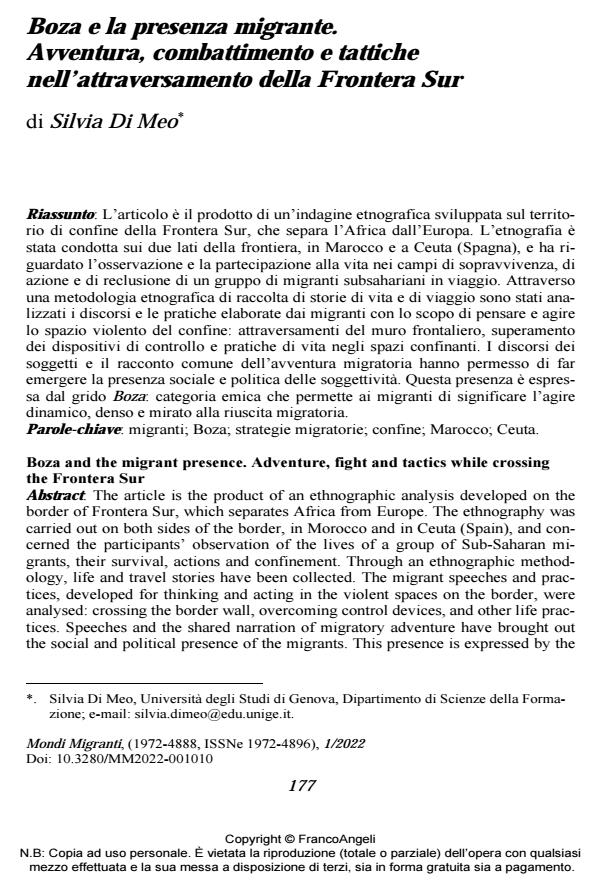Boza and the migrant presence. Adventure, fight and tactics while crossing the Frontera Sur
Journal title MONDI MIGRANTI
Author/s Silvia Di Meo
Publishing Year 2022 Issue 2022/1
Language Italian Pages 23 P. 177-199 File size 249 KB
DOI 10.3280/MM2022-001010
DOI is like a bar code for intellectual property: to have more infomation
click here
Below, you can see the article first page
If you want to buy this article in PDF format, you can do it, following the instructions to buy download credits

FrancoAngeli is member of Publishers International Linking Association, Inc (PILA), a not-for-profit association which run the CrossRef service enabling links to and from online scholarly content.
The article is the product of an ethnographic analysis developed on the border of Frontera Sur, which separates Africa from Europe. The ethnography was carried out on both sides of the border, in Morocco and in Ceuta (Spain), and concerned the participants’ observation of the lives of a group of Sub-Saharan migrants, their survival, actions and confinement. Through an ethnographic methodology, life and travel stories have been collected. The migrant speeches and practices, developed for thinking and acting in the violent spaces on the border, were analysed: crossing the border wall, overcoming control devices, and other life practices. Speeches and the shared narration of migratory adventure have brought out the social and political presence of the migrants. This presence is expressed by the migrants shouting Boza: emic category that allows them to signify the dynamic and dense action aimed at successful migration.
Keywords: migrants; Boza; migratory strategies; border; Morocco; Ceuta.
Silvia Di Meo, Boza e la presenza migrante. Avventura, combattimento e tattiche nell’attraversamento della Frontera Sur in "MONDI MIGRANTI" 1/2022, pp 177-199, DOI: 10.3280/MM2022-001010